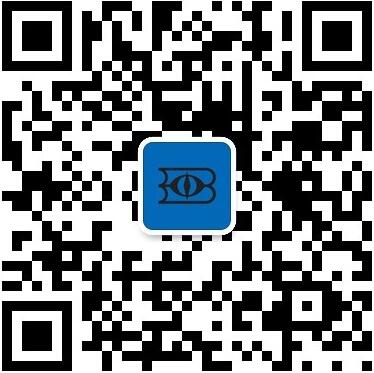【国外标准】 Standard Test Method for Pour Point of Petroleum Products (Automatic Pressure Pulsing Method)
本网站 发布时间:
2024-02-28
开通会员免费在线看70000余条国内标准,赠送文本下载次数,单本最低仅合13.3元!还可享标准出版进度查询、定制跟踪推送、标准查新等超多特权!
查看详情>>
适用范围:
5.1 The pour point of a petroleum product is an index of the lowest temperature of its utility for certain applications. Flow characteristics, like pour point, can be critical for the correct operation of lubricating oil systems, fuel systems, and pipeline operations.5.2 Petroleum blending operations require precise measurement of the pour point.5.3 In most cases, this test method does not require the use of mechanical refrigeration apparatus (see 7.1).5.4 This test method yields a pour point in a format similar to Test Method D97/IP 15 when the 3 °C interval results are reported.NOTE 2: Since some users may wish to report their results in a format similar to Test Method D97 (in 3 °C intervals) the precisions were derived from the temperatures rounded to the 3° intervals. For statements on bias relative to Test Method D97, see 13.3.5.5 Test results from this test method can be determined at either 1 °C or 3 °C intervals.5.6 This test method has better repeatability and reproducibility relative to Test Method D97/IP 15 as measured in the 1992 and 1998 interlaboratory test programs.41.1 This test method covers the determination of pour point of petroleum products by an automatic instrument that applies a controlled burst of nitrogen gas onto the specimen surface while the specimen is being cooled and detects movement of the surface of the test specimen with an optical device.1.2 This test method is designed to cover the range of temperatures from −57 °C to +51 °C. However, the range of temperatures included in the 1992 interlaboratory test program only covered the temperature range from −39 °C to +6 °C and the range of temperatures included in the 1998 interlaboratory test program was from −51 °C to −11 °C. (see 13.4).1.3 Test results from this test method can be determined at 1 °C or 3 °C testing intervals.1.4 This test method is not intended for use with crude oils.NOTE 1: The applicability of this test method or residual fuel samples has not been verified. For further information on applicability, refer to 13.4.1.5 The values stated in SI units are to be regarded as standard. No other units of measurement are included in this standard.1.6 This standard does not purport to address all of the safety concerns, if any, associated with its use. It is the responsibility of the user of this standard to establish appropriate safety, health, and environmental practices and determine the applicability of regulatory limitations prior to use.1.7 This international standard was developed in accordance with internationally recognized principles on standardization established in the Decision on Principles for the Development of International Standards, Guides and Recommendations issued by the World Trade Organization Technical Barriers to Trade (TBT) Committee.
标准号:
ASTM D5949-16(2022)
标准名称:
Standard Test Method for Pour Point of Petroleum Products (Automatic Pressure Pulsing Method)
英文名称:
Standard Test Method for Pour Point of Petroleum Products (Automatic Pressure Pulsing Method)标准状态:
Active-
发布日期:
-
实施日期:
出版语种:
- 推荐标准
- ASTM D7379/D7379M-08(2021) Standard Test Methods for Strength of Modified Bitumen Sheet Material Laps Using Cold Process Adhesive
- ASTM D7381-07(2021)e1 Standard Practice for Establishing Allowable Stresses for Round Timbers for Piles from Tests of Full-Size Material
- ASTM D7382-20 Standard Test Methods for Determination of Maximum Dry Unit Weight of Granular Soils Using a Vibrating Hammer
- ASTM D7385-21 Standard Guide for Estimating Carbon Saturation by Temperature Rise Upon Immersion
- ASTM D7387-20 Standard Test Method for Vibration Testing of Intermediate Bulk Containers (IBCs) Used for Shipping Liquid Hazardous Materials (Dangerous Goods)
- ASTM D7390-18e1 Standard Guide for Evaluating Asbestos in Dust on Surfaces by Comparison Between Two Environments
- ASTM D7391-20 Standard Test Method for Categorization and Quantification of Airborne Fungal Structures in an Inertial Impaction Sample by Optical Microscopy
- ASTM D7392-20 Standard Practice for PM Detector and Bag Leak Detector Manufacturers to Certify Conformance with Design and Performance Specifications for Cement Plants
- ASTM D7395-18(2023) Standard Test Method for Cone/Plate Viscosity at a 500 s-1 Shear Rate
- ASTM D7396-14(2020) Standard Guide for Preparation of New, Continuous Zinc-Coated (Galvanized) Steel Surfaces for Painting
- ASTM D7398-23 Standard Test Method for Boiling Range Distribution of Fatty Acid Methyl Esters (FAME) in the Boiling Range from 100 °C to 615 °C by Gas Chromatography
- ASTM D7399-18 Standard Test Method for Determination of the Amount of Polypropylene in Polypropylene/Low Density Polyethylene Mixtures Using Infrared Spectrophotometry
- ASTM D7400/D7400M-19 Standard Test Methods for Downhole Seismic Testing
- ASTM D7402-09(2017) Standard Practice for Identifying Cationic Emulsified Asphalts
- ASTM D7403-19 Standard Test Method for Determination of Residue of Emulsified Asphalt by Low Temperature Vacuum Distillation
 购物车
购物车 400-168-0010
400-168-0010













